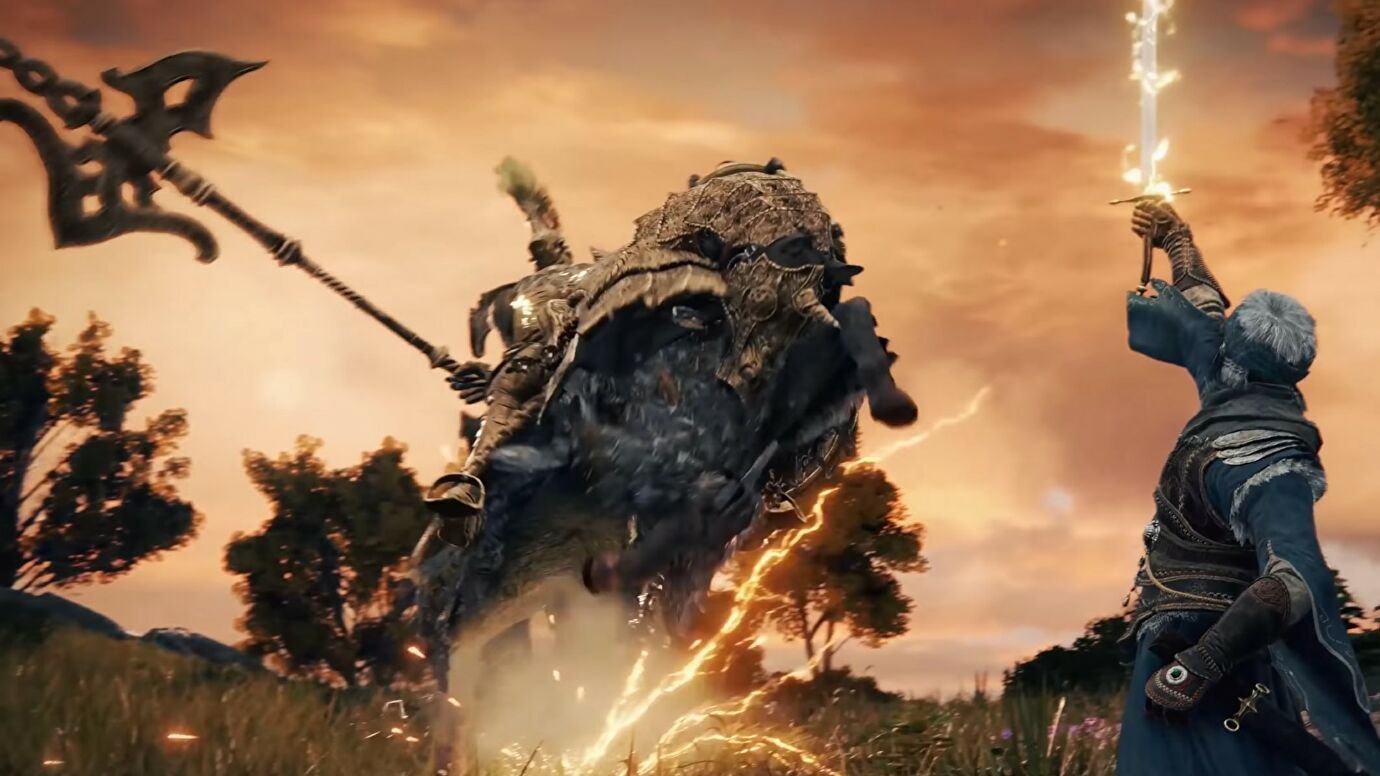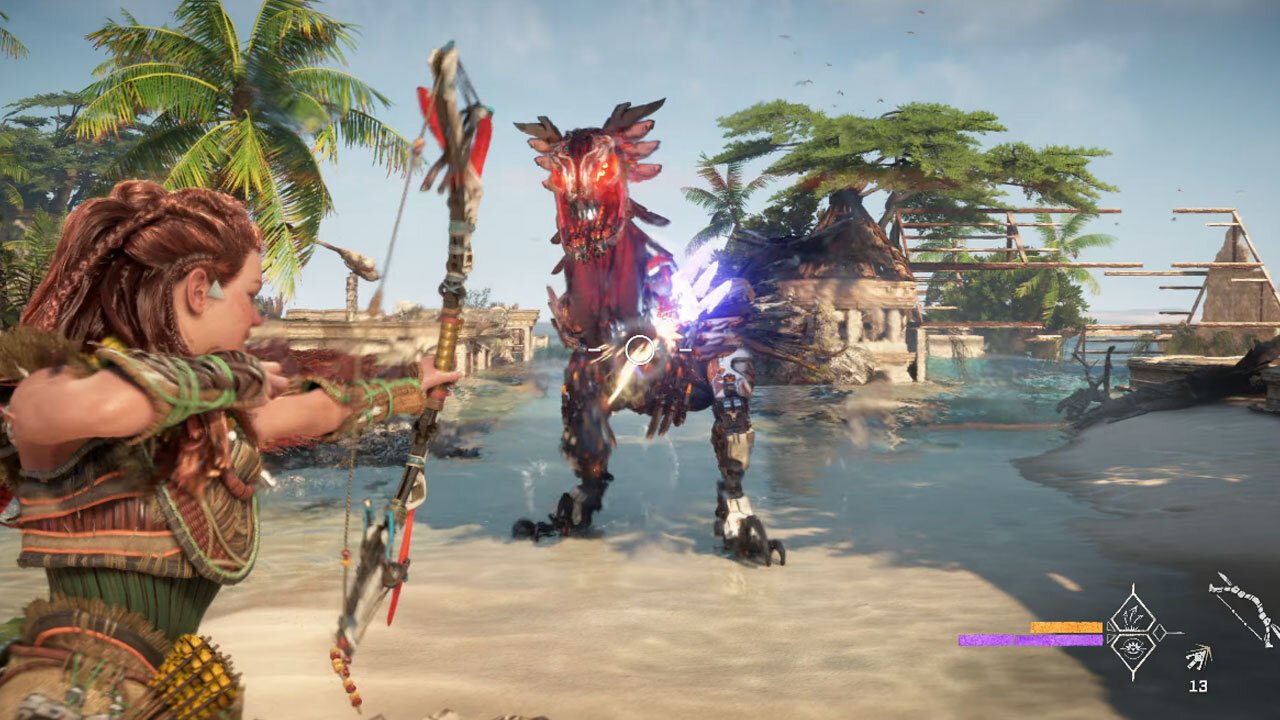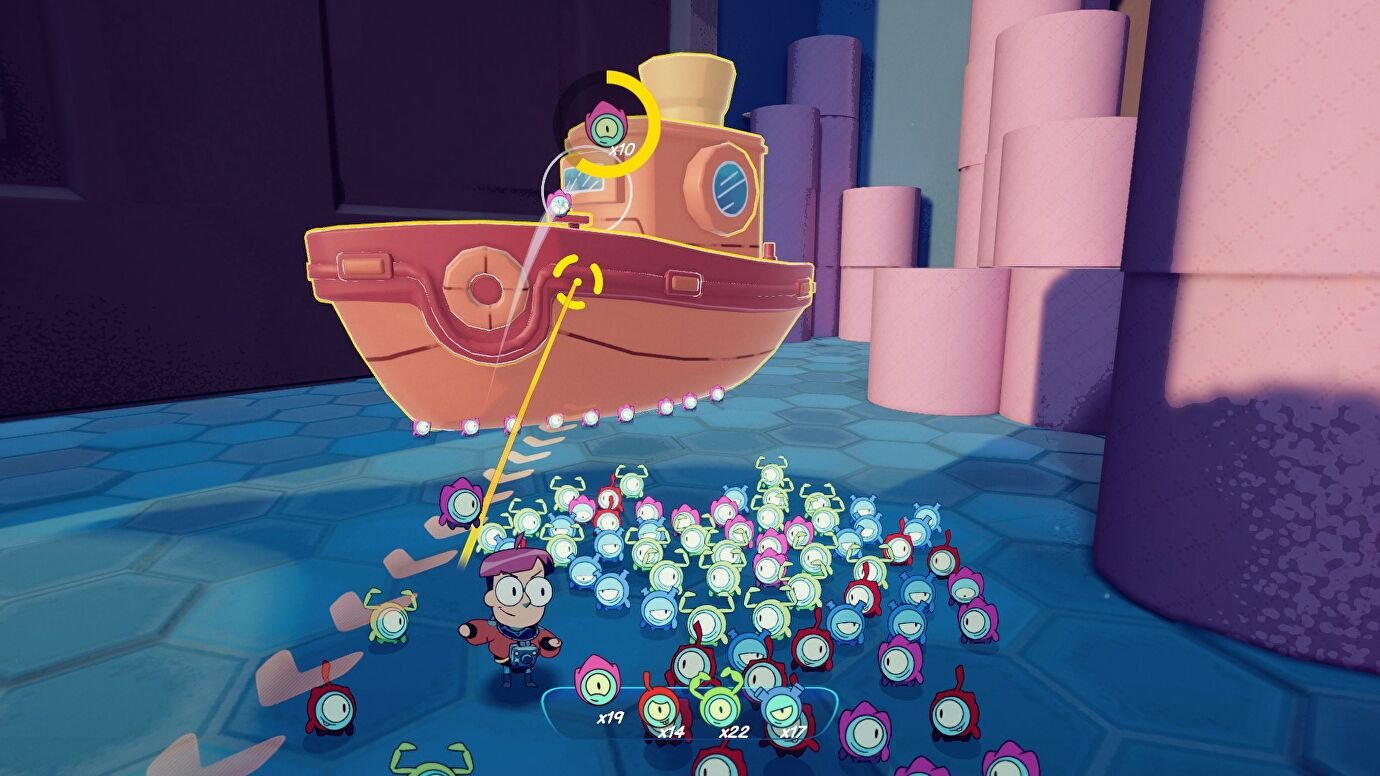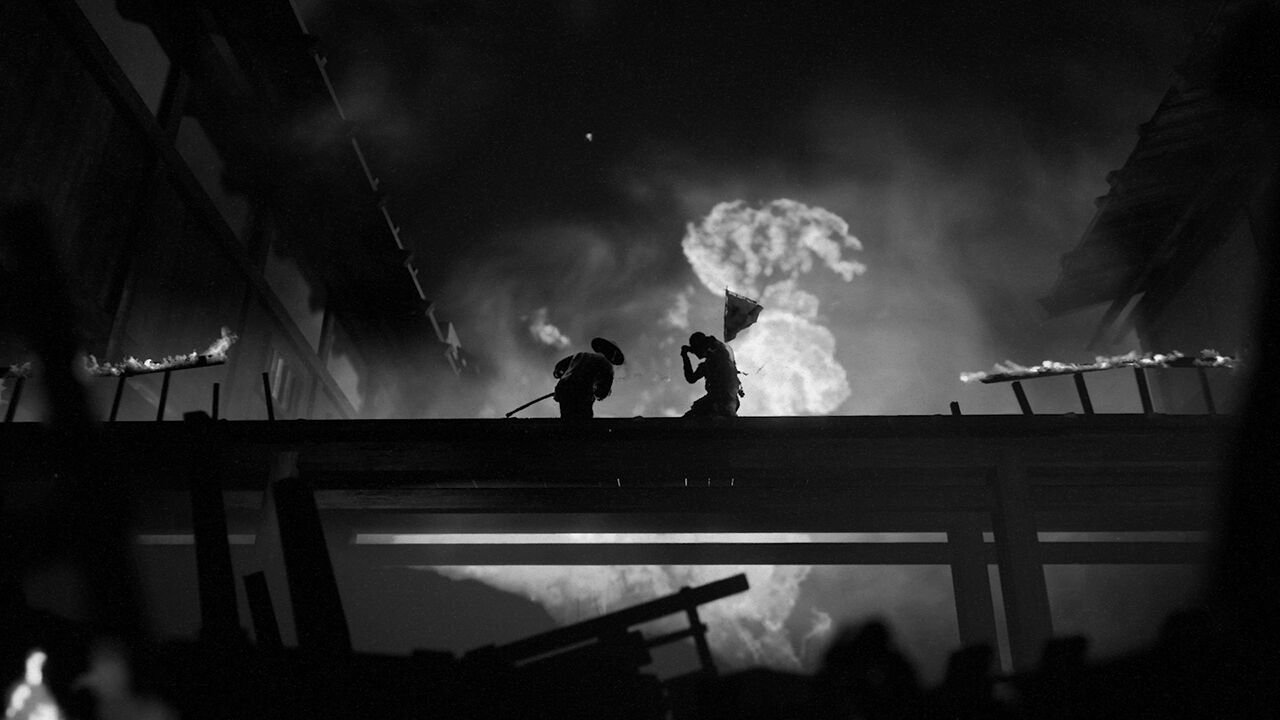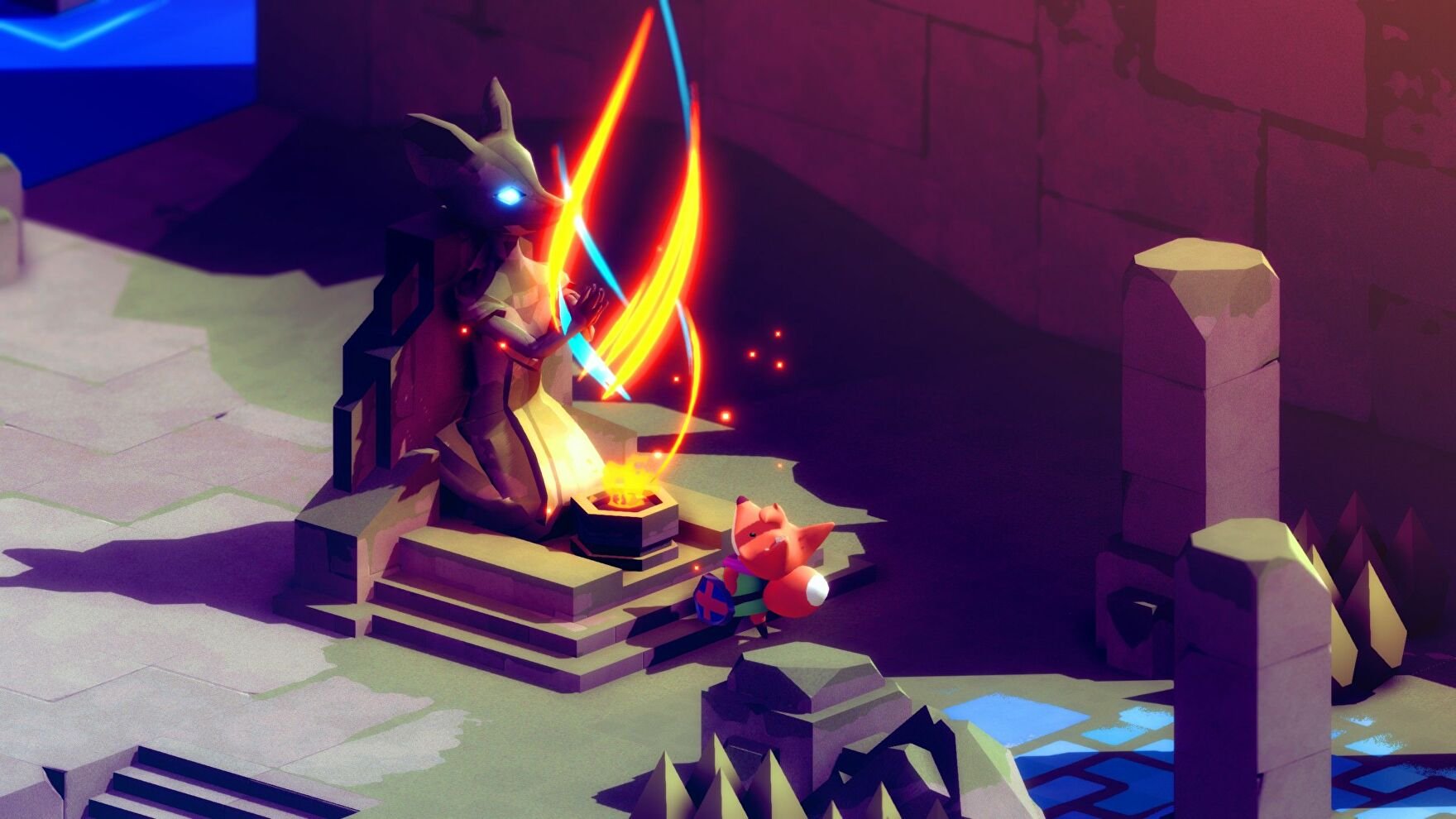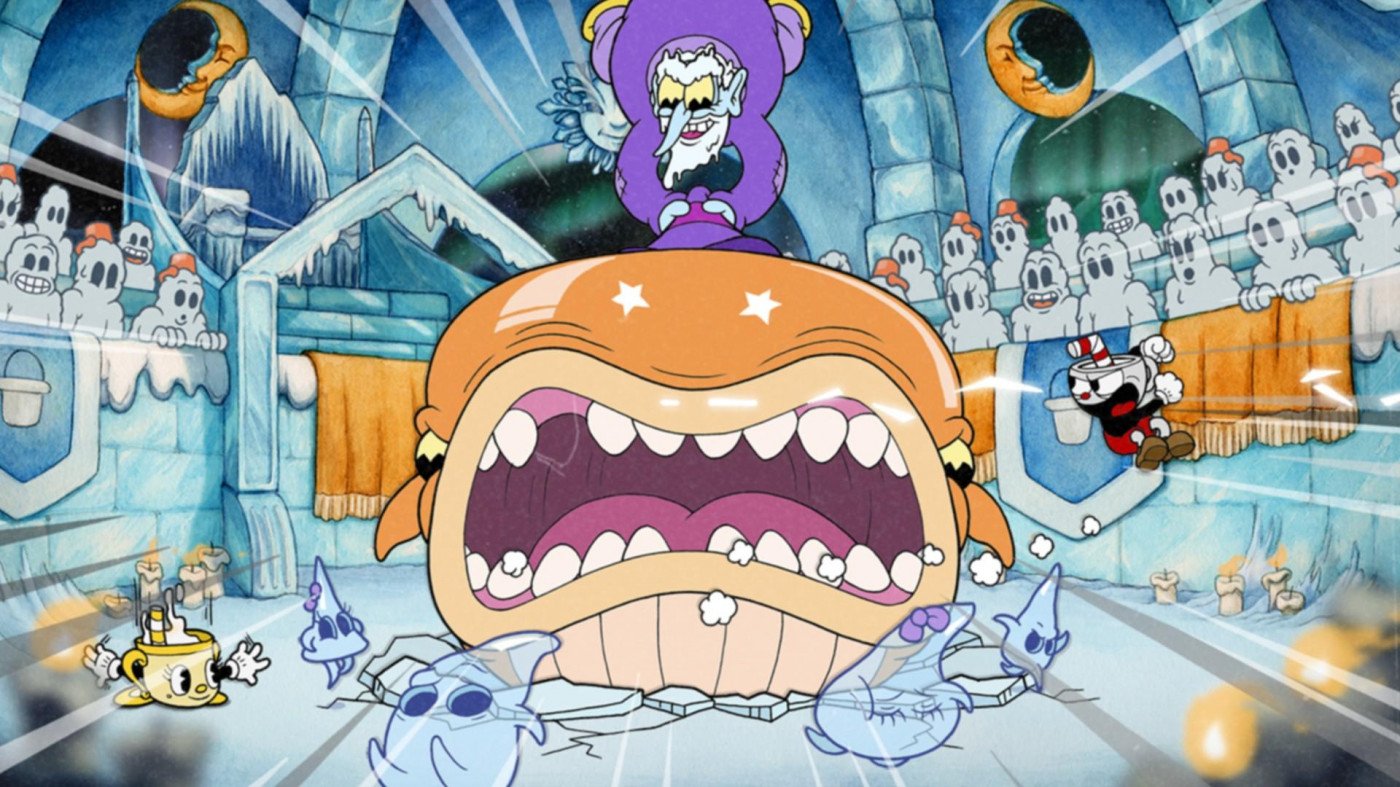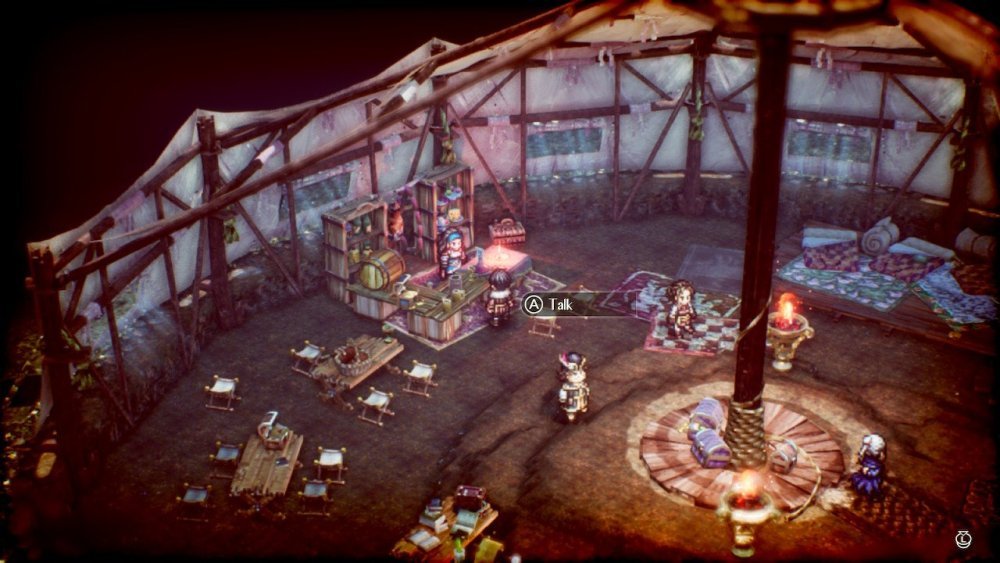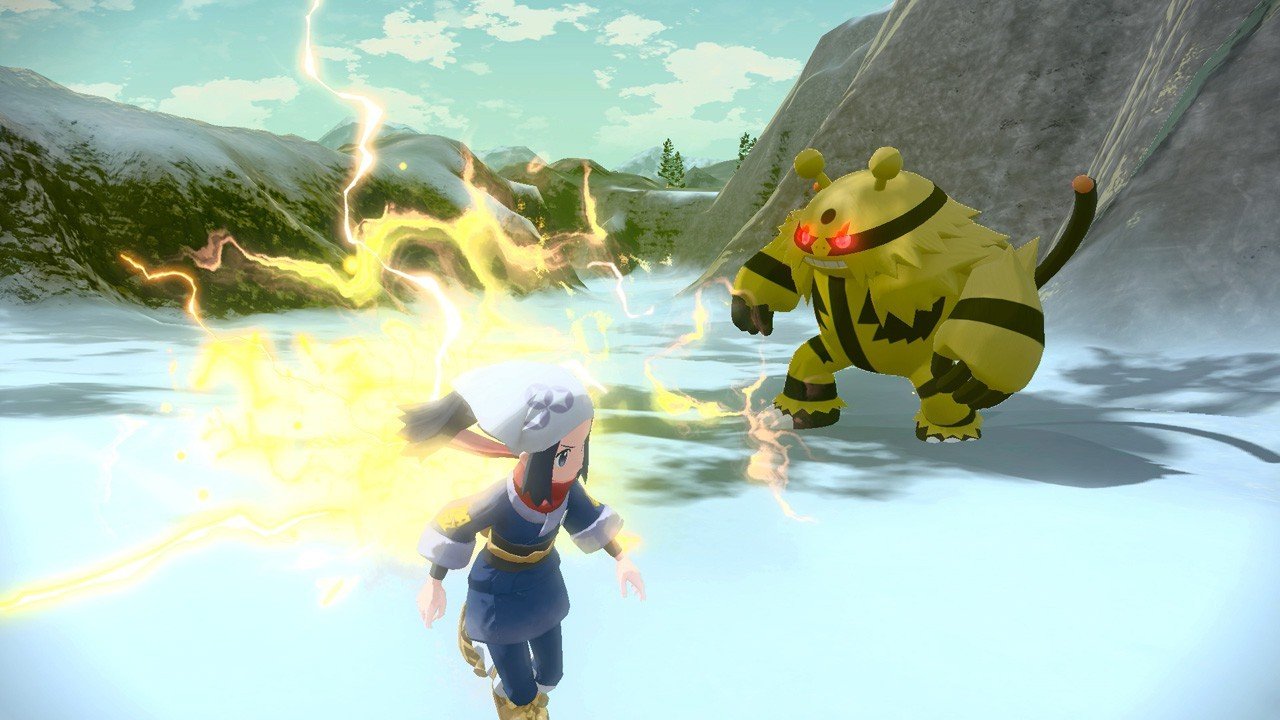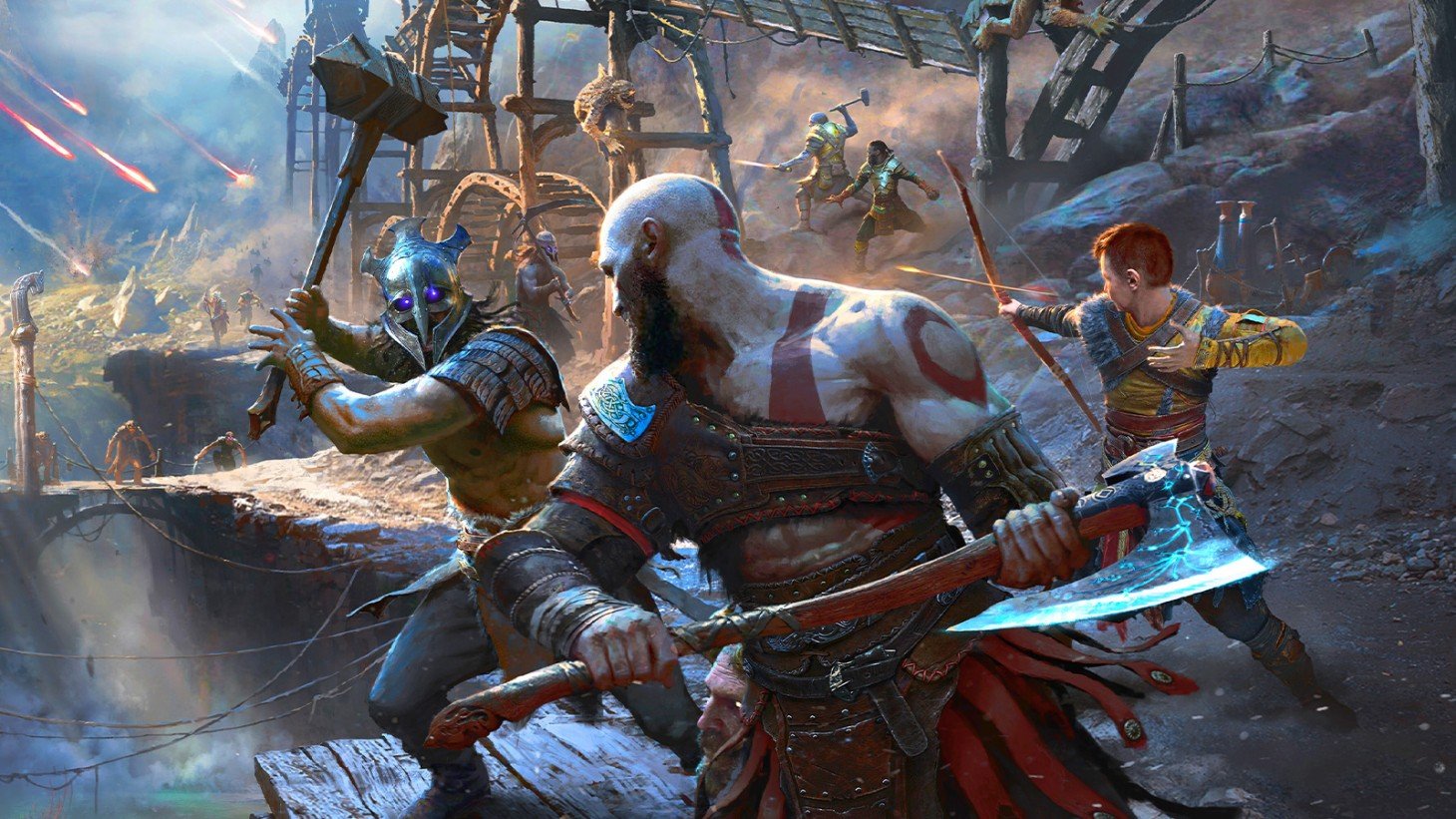Author: Shea Layton
Another wonderful year of gaming has come and gone. While some delays prevented 2022 from vaulting into legendary status, there were plenty of gems both AAA and indie alike. Here are the games that I felt like stood out this year.
10. Horizon Forbidden West - I have a difficult relationship with this game. Part of me really enjoyed it. The lush scenery, with the inclusion of underwater environments, was simply breathtaking. The combat was as solid as ever. The machines and creatures that populate the landscapes were always a fascination.
But for all of that, I feel like Horizon Forbidden West is the most average gaming experience I’ve ever had. It never takes any true risks, sans the mechanical creatures. The story is bland, cliche, and unmemorable. I couldn’t tell you any details; only that evolved humans returned to Earth to colonize it in the wake of their planet being destroyed. The characters and their development are enough to make the game progress forward, but there is almost nothing notable about them whatsoever. I felt like Aloy’s growth and development were more on display in Horizon Zero Dawn. With how the first game ended, I expected greater heights to be reached by both the story and the characters. Those heights were never reached.
However, the best part of the game was the final boss. It was difficult and frustrating in a good way. The boss tested my knowledge of the combat system, and it definitely tested my patience. One of the best boss fights of the year.
There are some great qualities about the game, but if future entries into this series are as boilerplate as Horizon Forbidden West, I will most likely move on from the series. But if you can find this game on sale, there is fun and enjoyment to be had.
9. Tinykin - An unexpected surprise, I tried this game after my co-hosts mentioned it on the Chompcast. Coming off of the immersive experience of Horizon Forbidden West, I needed a palate cleanser. Tinykin was the perfect game for the job. A six-to-eight hour collect-a-thon, I was able to jump into the game and immediately start having fun. Taking control of Milodane, I enjoyed searching for the various Tinykin with their unique abilities. The Tinykin, adorable as hell, allowed me to solve platforming puzzles and, ultimately, gather the components to build the device to take Milodane home. There are no enemies to speak of, so it’s you and the Tinykin collecting while enjoying the good vibes.
I enjoyed the different levels immensely, which are made up of different rooms in a two-story house populated by bugs. As you platform and move through various parts of the rooms, you begin to meet bugs who need Milodane’s assistance. The game is also jam-packed full of humor and references to games of generations past.
Something that was meant to be a simple experience in between some of the heftier games that I played, I am happy that I took the time to play Tinykin this year.
8. Infernax - Another game that my co-hosts discussed long ago on the podcast, I had been keeping Infernax in the back of my mind for when I would have time to get to it. Harkening back to the Genesis and SNES era of gaming, I was enamored with its aesthetic from the start. With heavy inspiration taken from Castlevania, you control the knight Alcindor as you wipe out monsters who have overrun your lands.
Infernax is a beautiful blend of classic gaming and modern gaming; while there is some grinding by killing monsters to level up, the game doesn’t ask the player to spend hour upon hour to gain some extra levels. Any grinding I did to achieve the next level never took more than 10 minutes. To me, it was a reason to enjoy the simple yet fun combat while partaking in the creature and environmental designs. Whenever you step into a new area, you must learn how the enemies attack. After figuring it out, you’re able to develop a strategy, which feels organic.
The bosses were creative and tough, yet victory was attainable. I loved seeing each boss on screen.
The other standout of this game was the choice system. There were multiple scenarios in the game where you had to make a difficult choice. Those choices led to different endings. With multiple endings, cheat codes, and hidden weapons in the game, there is a lot of replay value.
7. Elden Ring - I got into this game way too late in the year to effectively enjoy the entire experience. That being said, I have really enjoyed my time with it so far.
Any kind of medieval/fantasy game immediately appeals to me. With a lot of similarities to D&D, Elden Ring gives the player a ton of choice on how they want to play. Hundreds of weapons, hundreds of armor sets, hundreds of spells, and hundreds of accessories means that there are nearly incalculable ways for you to build your character. Sometimes the sheer amount of choices can be overwhelming, but it never feels unmanageable.
Like many other people, I have never been able to finish a Soulslike game from beginning to end. I often fall off because of the difficulty. The skill and patience requirements often prevent me from wanting to continue. Due to Elden Ring being open world, I have been able to find areas where the combat feels more feasible.
It has been exciting to see all of the various creatures in the game and the inventive ways that you have to approach each one. The environments are fun to explore, as there seems to be a secret lurking around every corner.
What kept this game from being higher on the list for me is it’s a tougher game to get into due to the difficulty requirements. You have to have the patience to learn the systems and improve your character, and I’m not the most patient gamer. Also, while I find the way the story is told to be interesting, I think I prefer a more direct way of storytelling.
I can’t wait to finish this game. I wish I had sooner so I had a more complete impression.
6. Trek to Yomi - Trek to Yomi was on my short list of games I was looking forward to this year as a “must-play.” The Kurozawa art style caught my eye from the moment I saw the initial trailer. Booting up the game and seeing the first cutscene, I was committed to finishing the game. Throughout the entire experience, what one could initially describe as a “gimmicky” art style turned into something substantial: it was a vessel to fully express the narrative. While the story is an oft-trodden road (revenge), I felt that the art style brought out the best of the story. Choosing to use black, white, and sepia tones, I felt the loss and guilt that the main character experiences at the beginning. When color was used, which was a rare occurrence (and for spoilers reasons I won’t divulge here), it was powerful.
The audio production was well done. Music was sparingly implemented, making the voyage to achieve vengeance uncomfortable yet necessary. The sounds of death and metal ringing as swords clashed struck a chord with me, sometimes making me hesitate to attack whomever stood in front of me.
While many parts of the game worked for me, what kept this game from being higher up for me was the inconsistent combat. At times, it felt reasonably smooth and engaging. Other times, I felt as if I was moving through molasses. Towards the end, the game throws mobs of enemies that require different approaches. It became overwhelming, and I thought to myself, “I can’t wait until this section is over.” I never expect to like every aspect of a game, but with the gameplay so heavily predicated on the combat, I think that the swordplay should have been tighter.
Despite the combat issue I had, I think the aesthetic of the game, both visual and audio, makes it an essential gaming experience from this year.
5. Tunic - After seeing the preview videos for Tunic, I had it on my radar for some time. When I was finally able to get around to it, I was sucked in. Starting off as that cute fox in a world that felt both thrilling and fierce compelled me. To put it simply: I devoured this game…minus a few bosses that halted my progress and made me play more methodically (looking at you, The Librarian and The Heir).
The exploration in Tunic is a treat. Similar to A Link to the Past, there are many secret areas and items to discover in the game, making you never want to stop exploring. One of the coolest collectibles I’ve ever seen in a game is Tunic’s instruction manual pages. You can find segments throughout various areas in the game. The pages serve many functions: a map, how-to guide, tips, hints to find treasure, and some of the pages even contain puzzles. There was something satisfying about collecting the manual pages, as I come from an era in gaming where all game cases had physical manuals. I would look at those manuals for each game I had. When I was able to complete the book and look at it from cover to cover, I was proud of myself. The exploration rewards you, and the reward is worth it, which is not something you can always say about collecting in video games.
The audio production was lush and mellifluous. The soundtrack is easily one of the best of the year for gaming. Some songs are wondrous while others are harrowing. On top of that, the sound effects make the world feel lived in, whether they are adding to the feeling of a wide open space or the intensity of fighting in a dark corridor. The game even contains puzzles that hinge on the audio production being as tight as it is, which blew my mind.
The combat is fun and enjoyable. I had fun growing my little fox’s capabilities, making him feel formidable in a world designed to kick you down repeatedly. My small gripe with the combat is some of the bosses are too deadly. They can rely on the player to make precise movements, yet the gameplay isn’t tight enough to allow the player to consistently and reliably do that.
The narrative, while nebulous right until the end, was a fun mystery to unravel. While I was able to predict how the game would unfold, it didn’t make the journey any less sweet.
4. Cuphead: The DLC - Back in 2017, I was obsessed with Cuphead. I played through the game multiple times, doing every possible thing that I could in the game. After sixty-plus hours of the main game, I wanted more content. When Studio MDHR announced the DLC, I was jubilant. I needed more Cuphead. It took five years for the DLC to drop, but the wait for The Delicious Last Course was absolutely worth it.
Adding another island meant five more brutal bosses to wrap my mind around. In many ways, the DLC felt like an extension of the original game. However, it set itself apart as it expanded and improved the core gameplay in a few ways.
The game added another character, Ms. Chalice, who had new abilities such as a double jump and a roll to dodge attacks. The game also added three new weapons to take on enemies with. For the core gameplay, these additions made the game easier to get through. Getting through the new island, however, was an arduous task. For the first play through, it felt essential to use the new abilities and character to make it through.
The new boss levels didn’t disappoint. They were creative and challenging, which is exactly what I wanted. But a few of the levels felt innovative in the context of Cuphead. One boss would periodically shift the orientation of the screen sideways, forcing you to play the game sideways or upside down while preserving your precious hit points. The final boss was in my top two of most difficult boss fights this year, with deadly projectiles flying at me horizontally, vertically, and diagonally. Studio MDHR built upon the Cupped formula with malevolent invent, and I willingly consumed its deliciousness.
The music and art style are just as fantastic as the core game. The visuals have improved, which is to be expected with five years’ worth of work. It was clear to me that Studio MDHR spent a lot of time to carefully craft the DLC, which is what made me fall in love with Cuphead in the first place.
3. Triangle Strategy - Co-developed by Square Enix and Artdink, those studios are no strangers to developing a quality tactics game. Triangle Strategy is just that: a tactics game of the highest quality.
With a similar art style to Octopath Traveler, I was immediately intrigued from the first trailer. When the demo dropped, it gave a great sample size of how the gameplay and narrative would work.
I was enamored with the combat from the start. It felt challenging, yet not unforgiving. All of the characters had unique abilities and classes, making them stand out from each other. Oftentimes, I feel like tactics games will have characters that are so similar to each other that they feel like palette swaps. With how vastly different each character plays, the game allows for a multitude of approaches to each battle. With the sheer number of battles and the training you can do, the game also prompts you to try playing as all of the characters, giving you an idea of which ones ideally fit your style.
At first, the narrative didn’t jump out at me. The exposition was lengthy and verbose. I almost fell off. But I stuck with it, and I’m happy that I did. What happened was I became engrossed in a detailed and organic story rich with character development. There are many storylines that happen simultaneously. The lynchpin that kept me wanting to delve into the narrative was the morality system, where you convince the main character’s most trusted allies of one of three paths to take when dealing with a decision of great importance. The game made me earn every conviction to sway a party member, making it all the sweeter when I proved victorious. I truly felt that my decisions were honored, making the system feel justified.
The soundtrack is typical fantasy and tactics fanfare, but it is the best version of those genres. It’s bombastic when it needs to be, swelling to climactic moments. Other times, when something dark and sorrowful has befallen one of the characters in the story, it populates the background, amplifying the mood.
Tactics games are not to everyone’s taste. I fully expect some people to scoff at playing one. They can be annoying and frustrating. However, I think that Triangle Strategy is one of the best games in this genre. If you are willing to be patient with it, it will take you to some incredible places.
2. Pokemon Legends Arceus - I could say so many things about this game, but I’m going to keep this one brief.
Game Freak made a Pokemon game where the research and catching is more important than the battling. Seeing the Pokemon wandering around in real time, and being able to go over to them immediately to capture them for a purpose was brilliant.
The game revolves around one hub area, allowing you to make more connections with the NPCs. It felt wonderful to actually care about the people I was talking to in a Pokemon game.
Having an extensive background in ecology and ecological research, this is the Pokemon game I have always wanted. I truly hope that Game Freak makes more games like this.
1. GOW Ragnarok - This game is a masterpiece. If you take anything away from my lengthy explanations, this is the most important point to take away. If you want to hear more, let me tell you why I think that.
The narrative is world class, and the pacing is effortless. I never felt any part of the story was dragging on or too short. Everything that happened in the story was necessary and integral into Kratos’ and Atreus’ story. Some parts of that narrative were on the nose and left little to interpretation. Other parts were subtle; they were meant for the player to sit with them and live with what they witnessed. With how well the pacing was done in God Of War: Ragnarok, I was constantly intrigued about the next step to stopping Ragnarok and saving Kratos’ life.
The shining qualities in God Of War (2018) were the character development and conversations between the characters. The developers and writers took those qualities and somehow made them even better. The game sees more characters become integral parts of the story, and they all had something interesting to add to the story. How often is it that there are ten-plus characters on screen throughout a game and they are ALL interesting? How these characters develop and change throughout the ordeals that they face during God Of War: Ragnarok feels so natural. I found myself emotionally moved multiple times by these interactions.
The combat, which has always been a centerpiece of the God of War games, feels improved upon here. By adding a third weapon and tweaking the other two, the combat feels incredibly balanced. With some of the challenges and harder battles in the game, it became necessary to familiarize myself with all three weapons and their abilities. I loved using them all. I also really enjoyed the variety in enemy type and style, something I felt was a weaker point in God Of War (2018).
Being no stranger to boss fights, I can safely say that I will not be forgetting some of the boss fights in this game for a long time. There were so many unique and memorable boss fights that made me simultaneously smile while gritting my teeth at their difficulty.
The voice acting and motion capture are sublime, the visuals are breathtaking, and the upgrading system is a blast to peruse through.
If there’s one game that you are going to play from 2022, God Of War: Ragnarok is the one to play.

